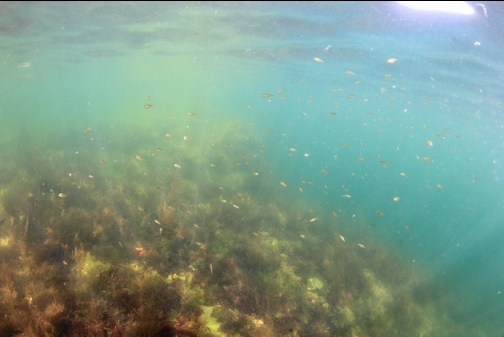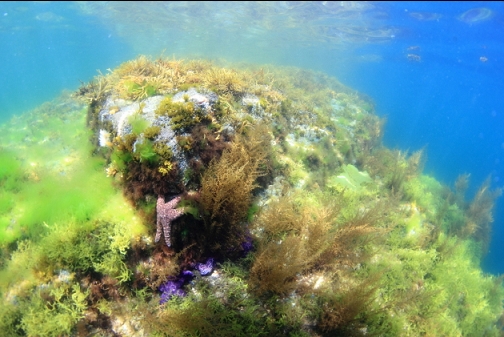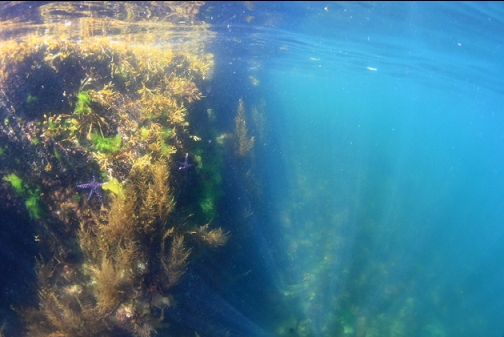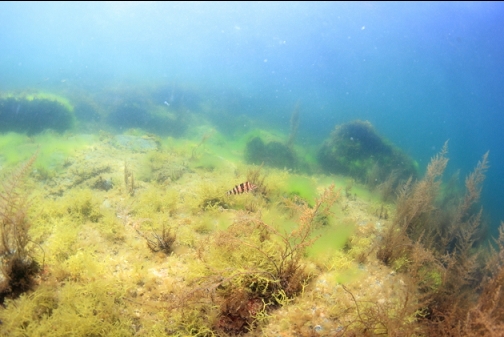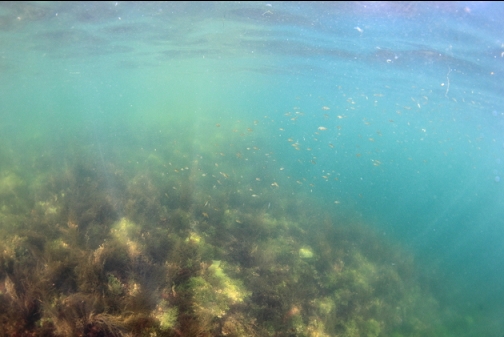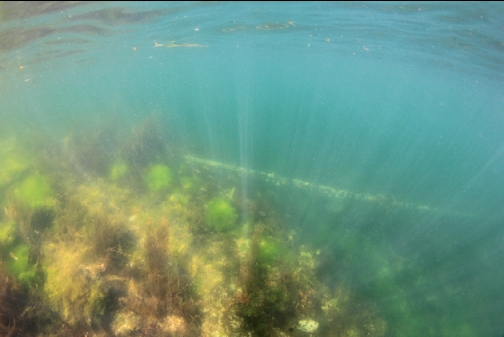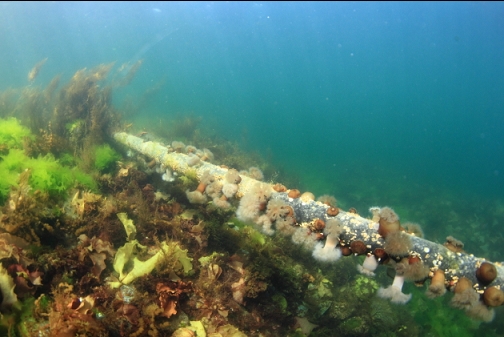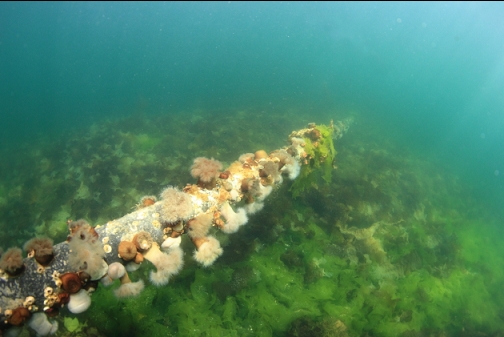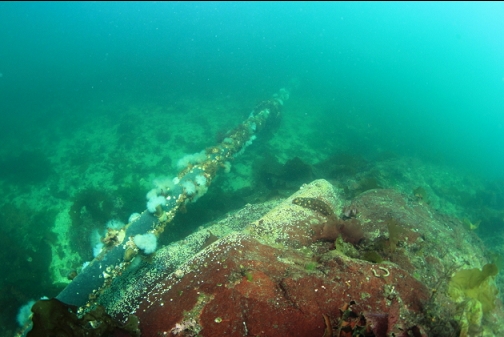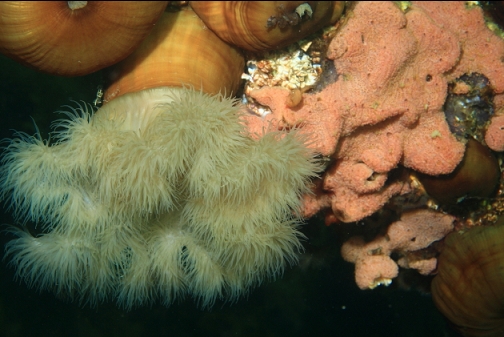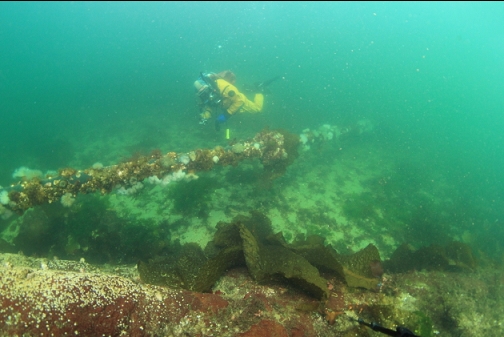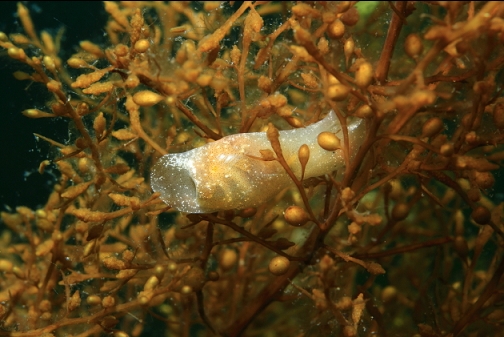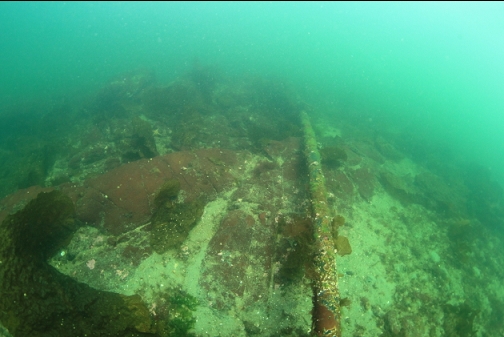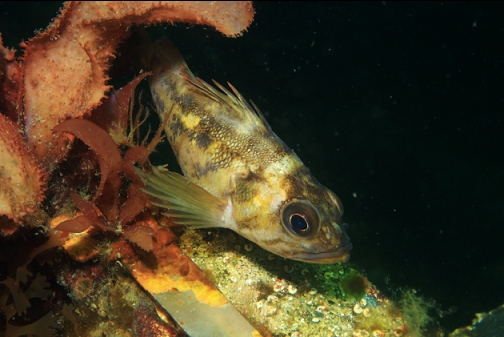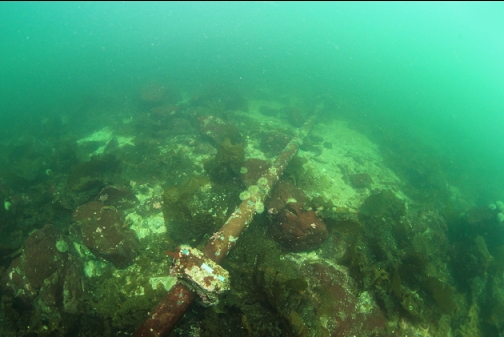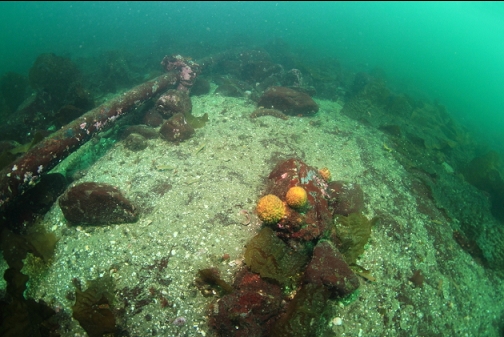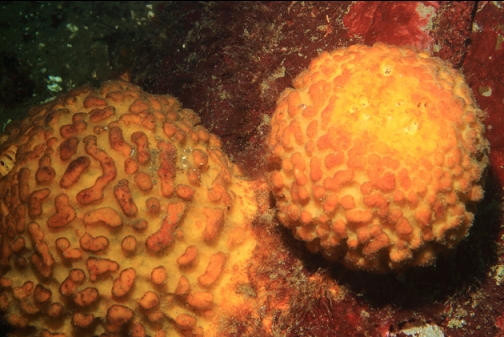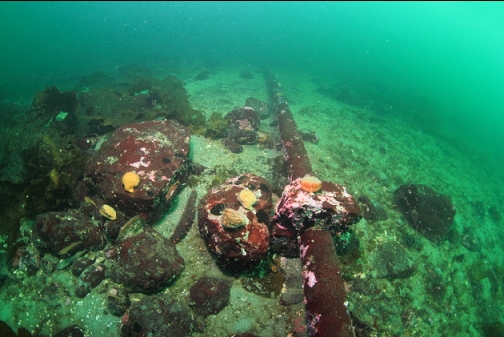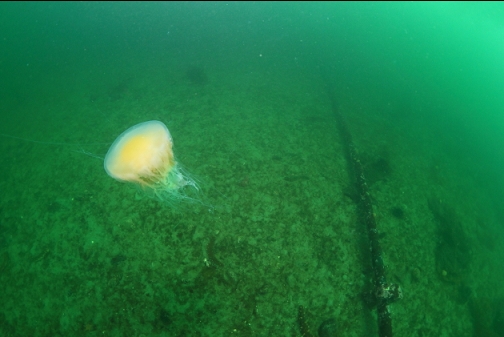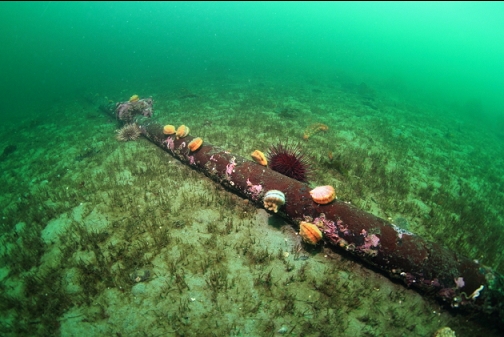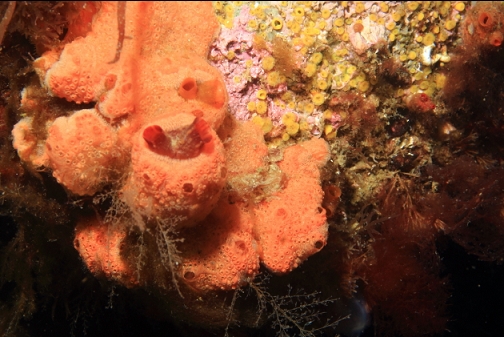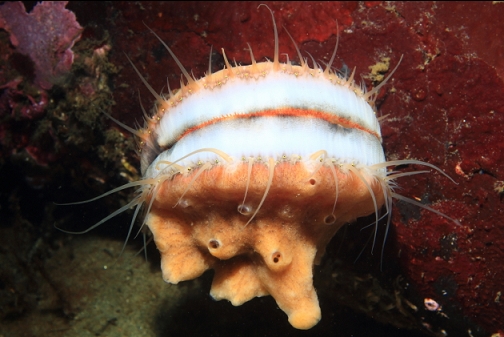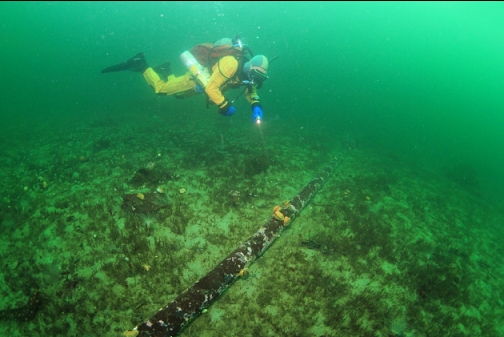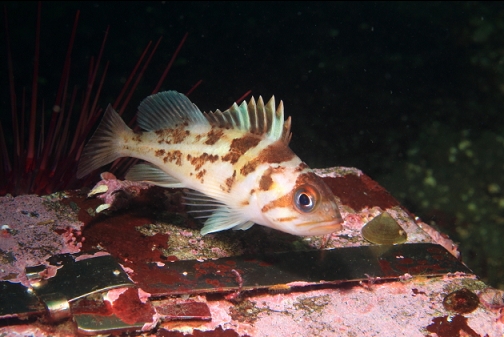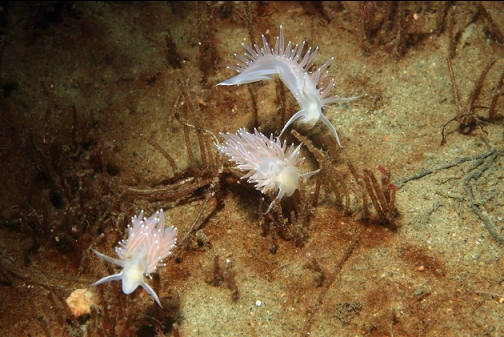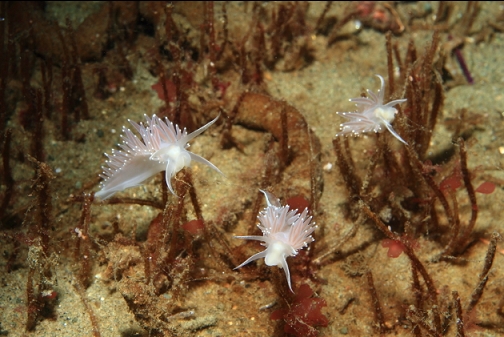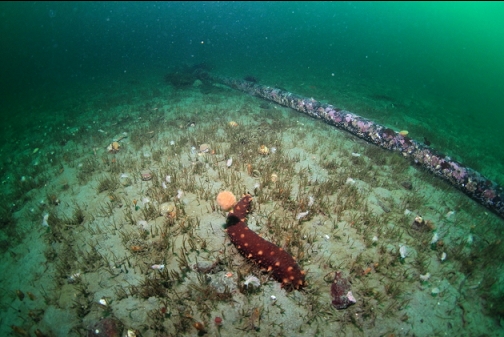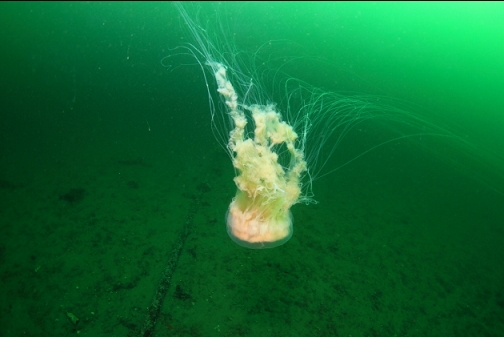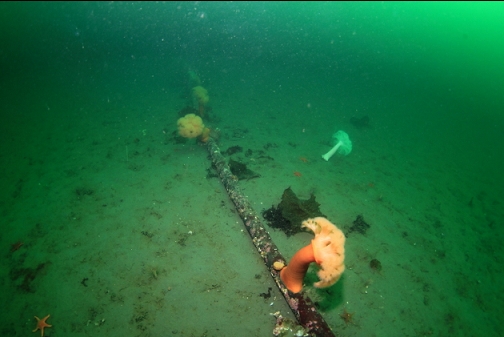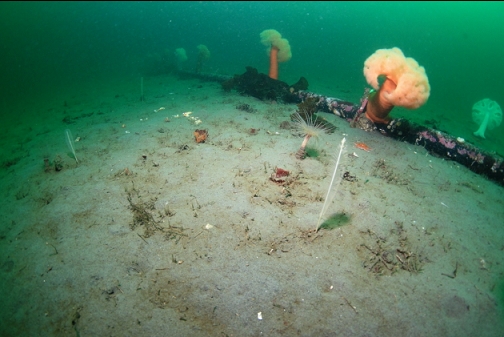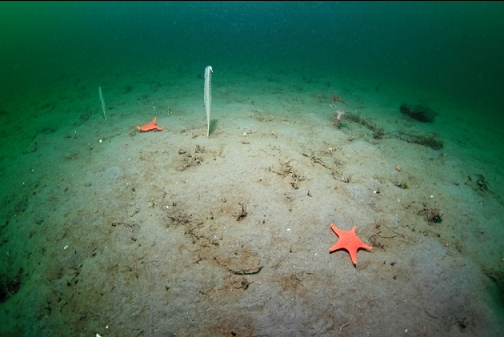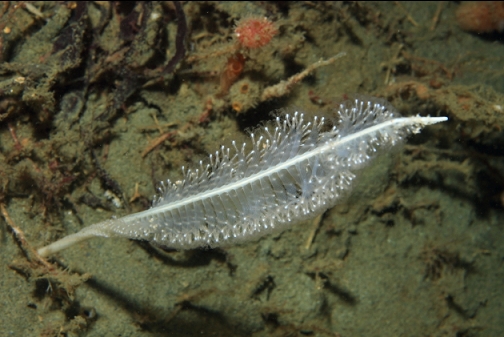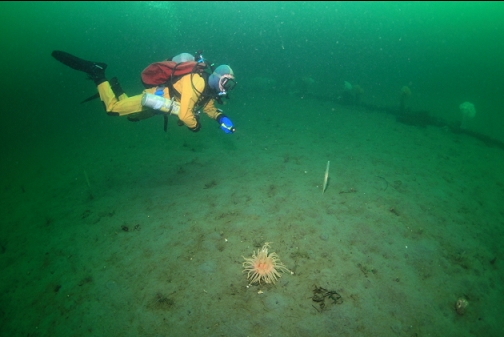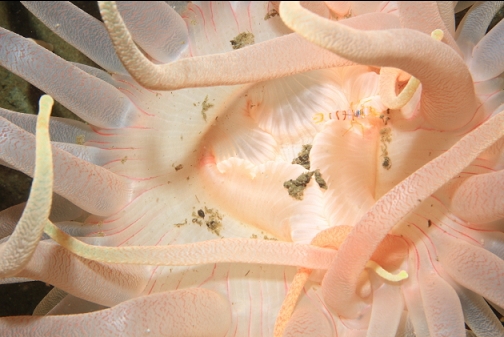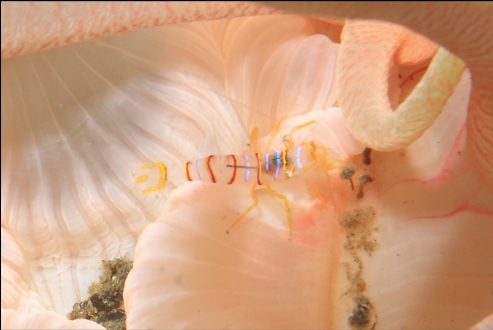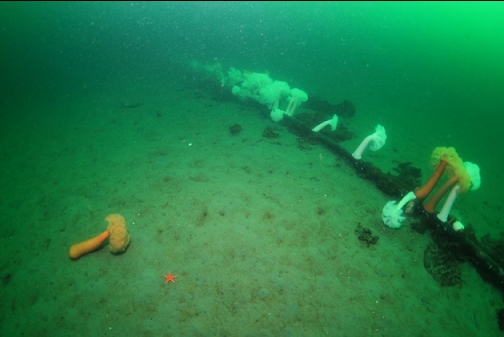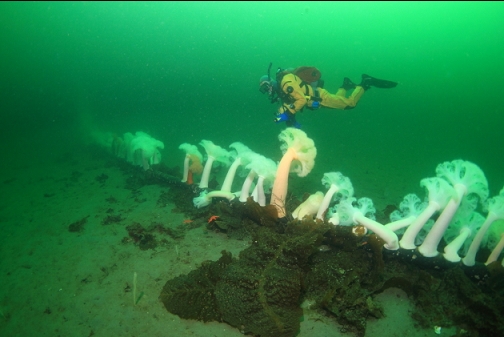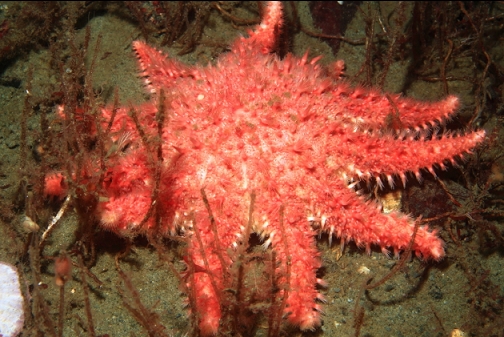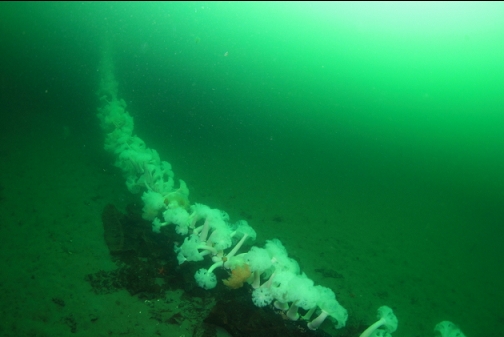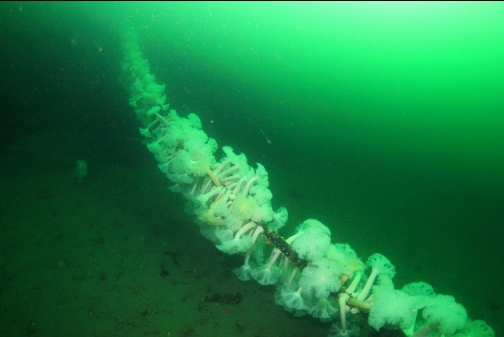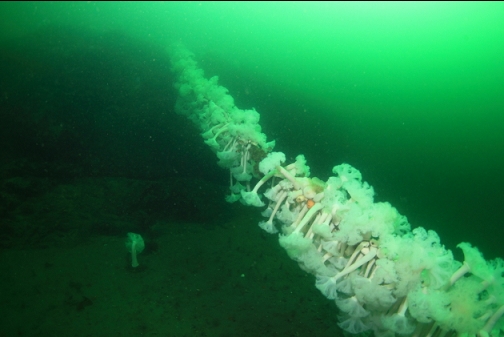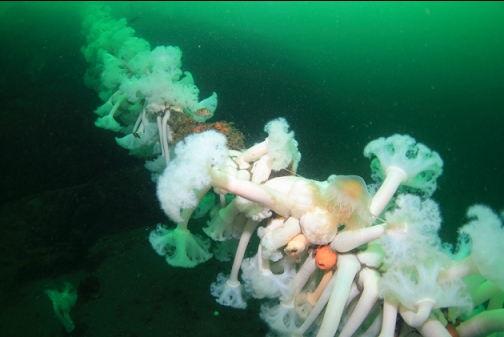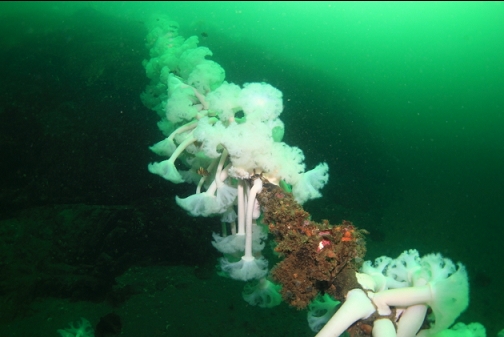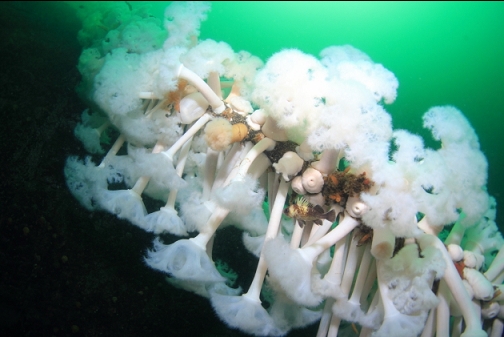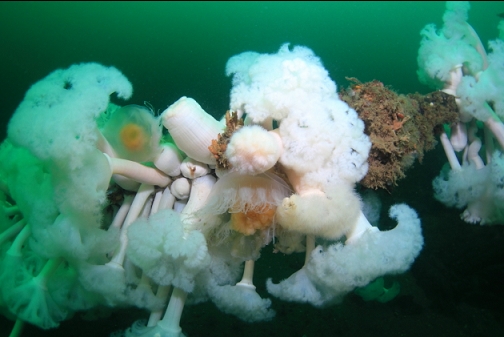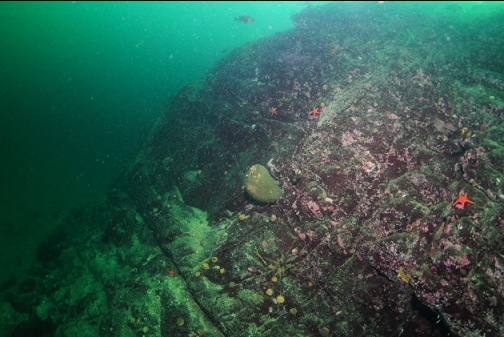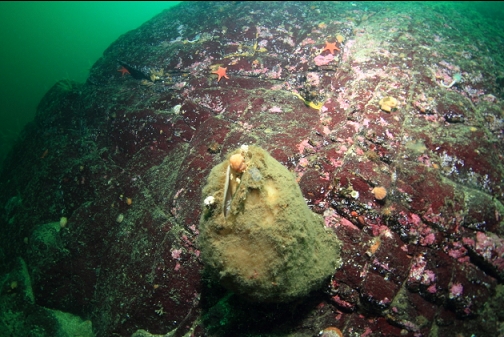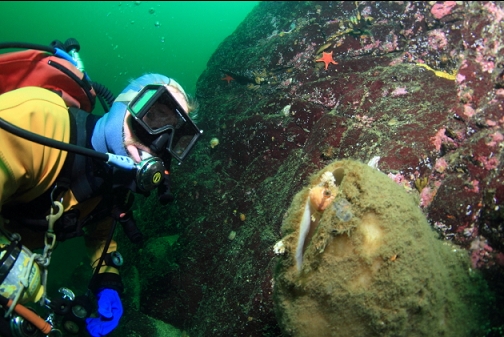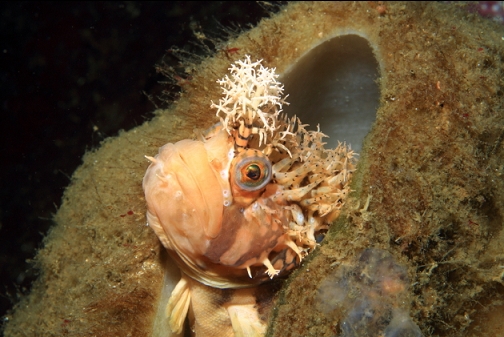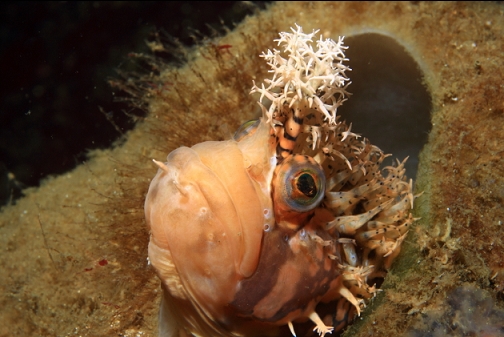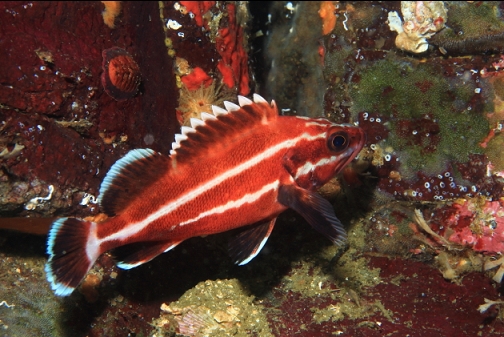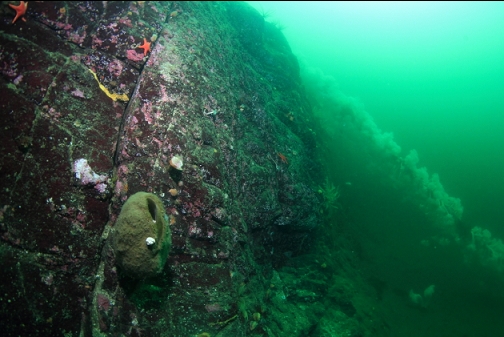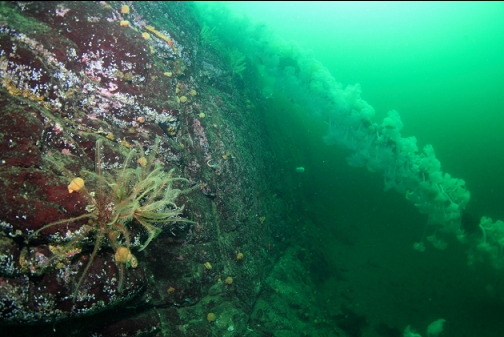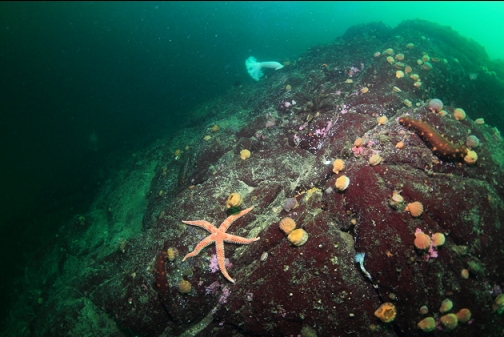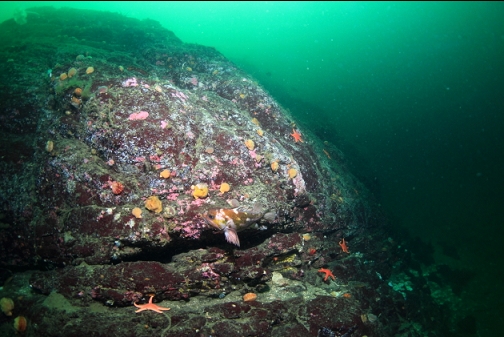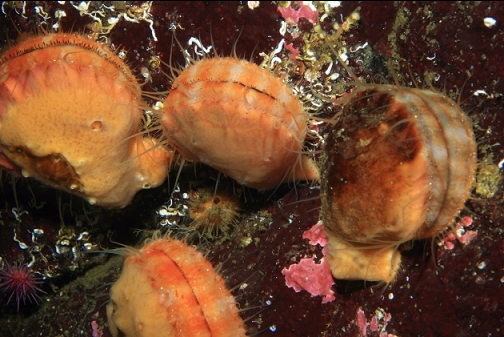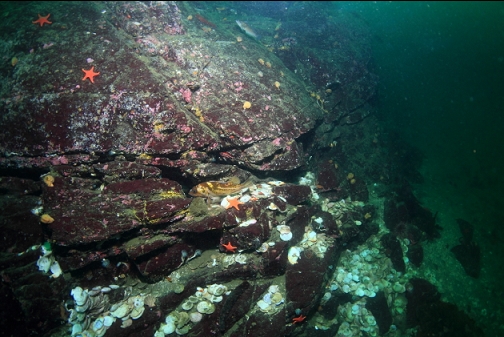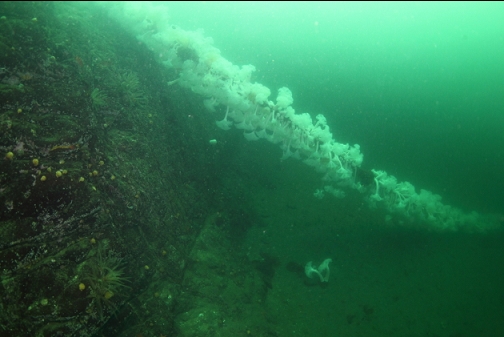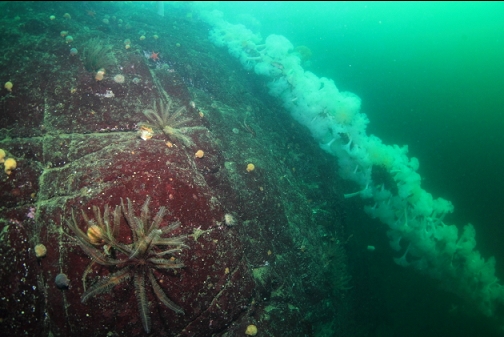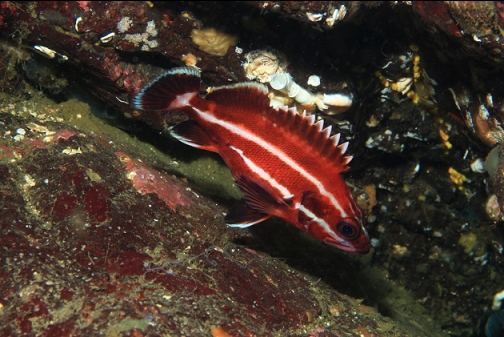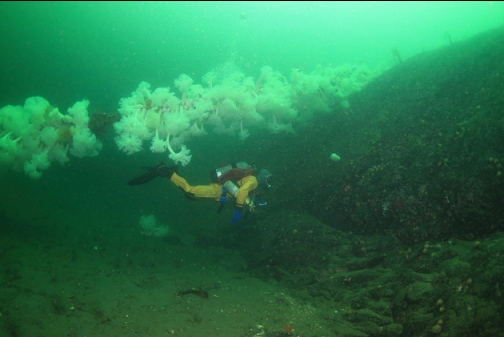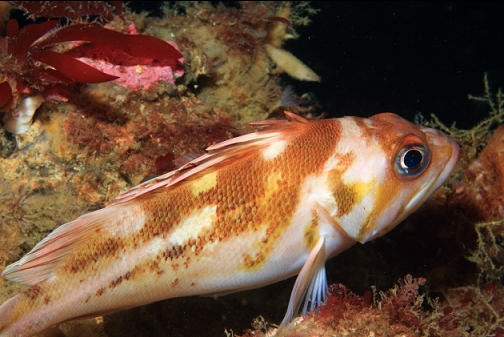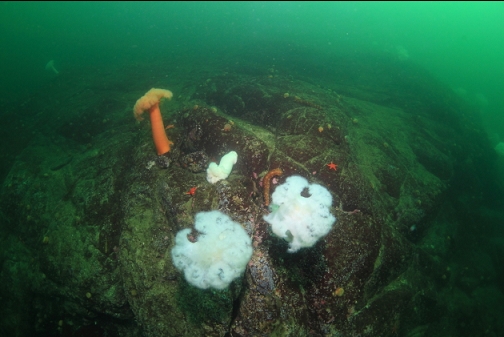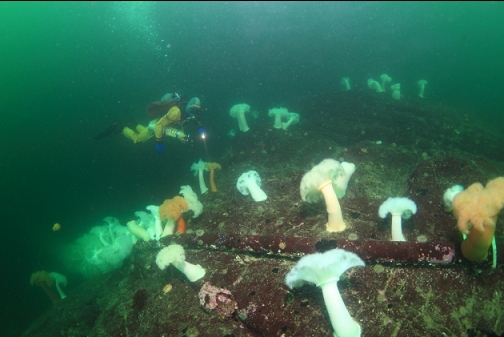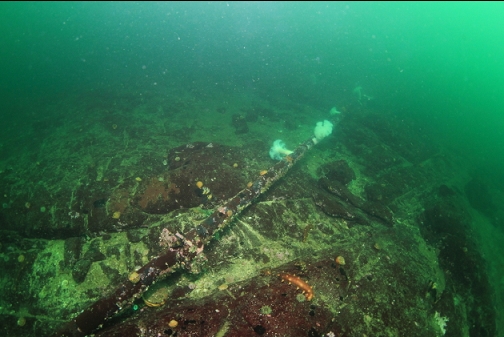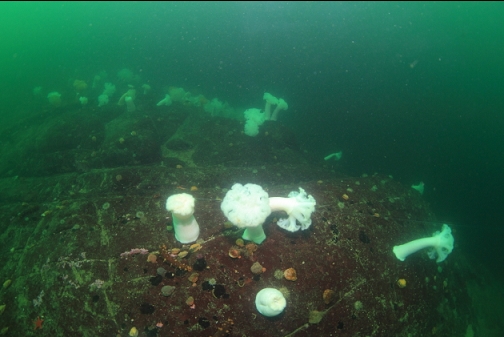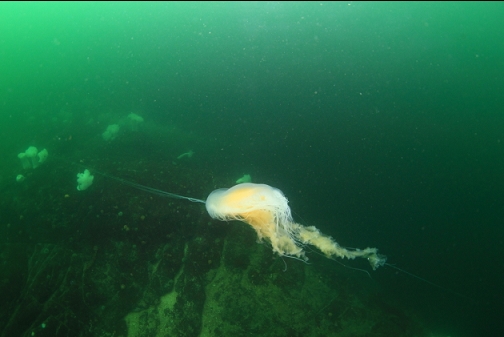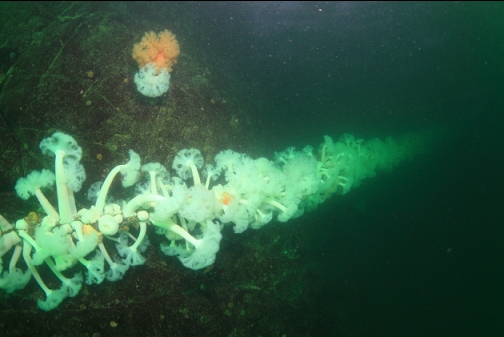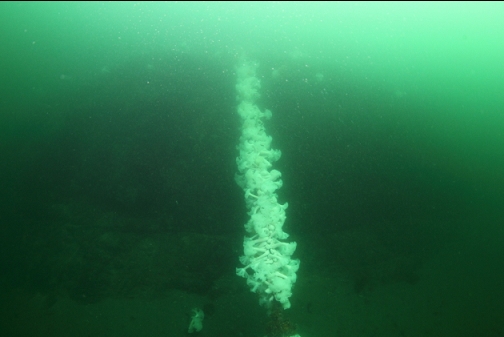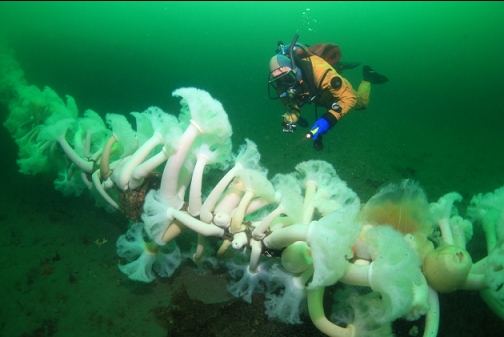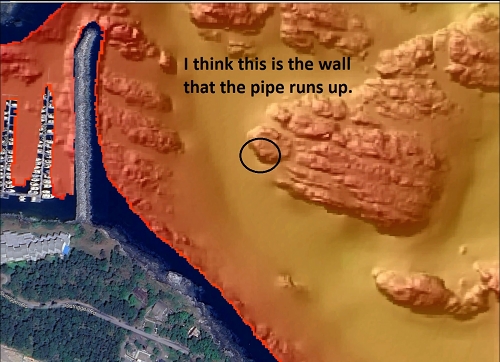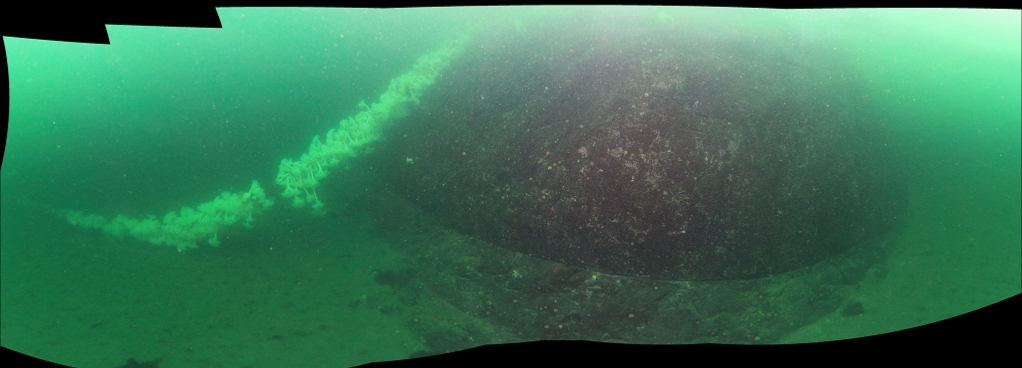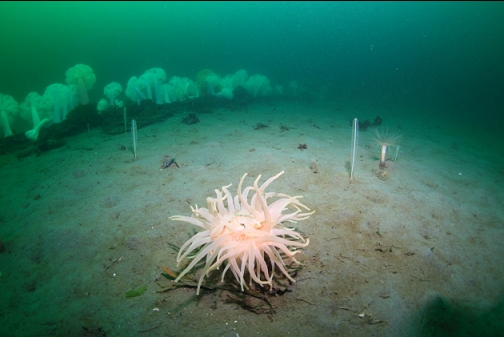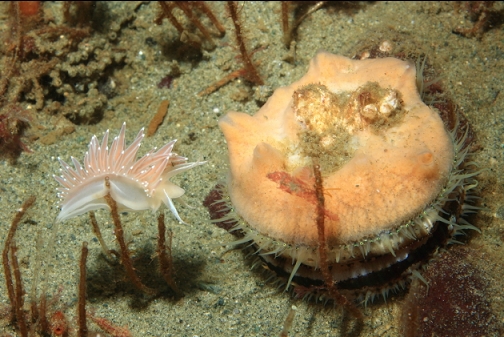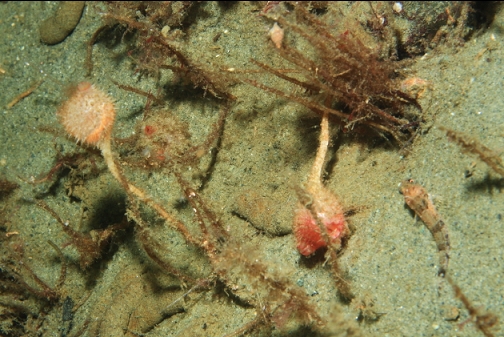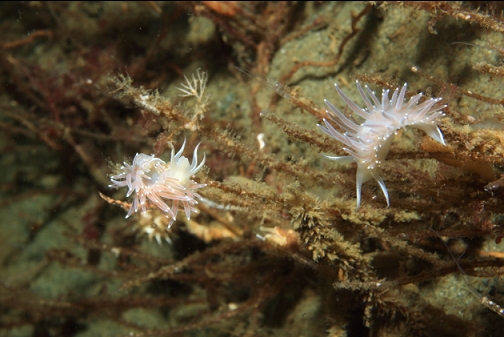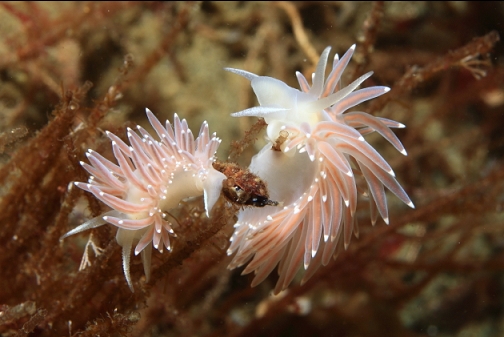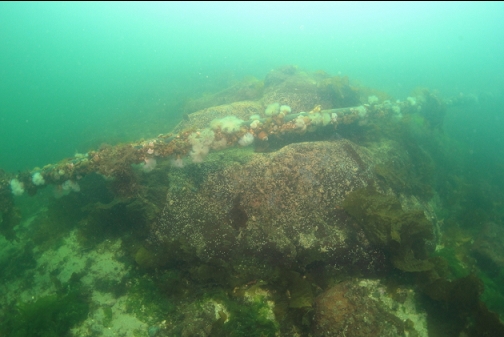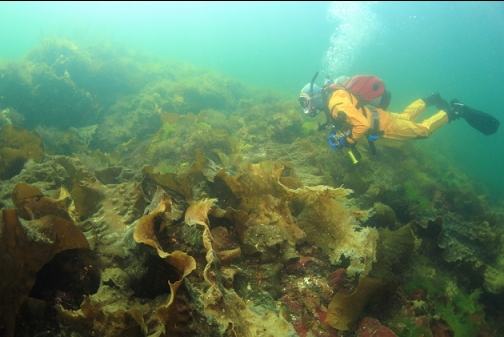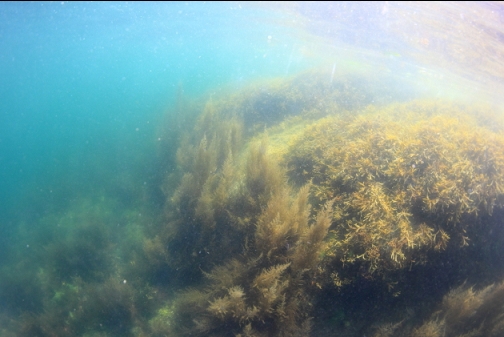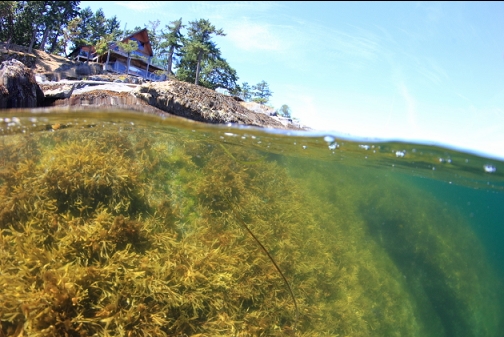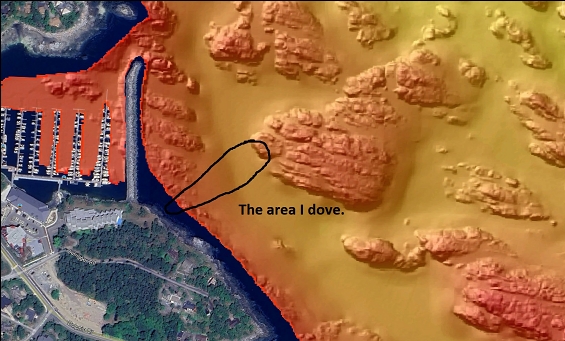
I've already been diving on a sewer outfall sticking out from Nankivell Point, just North of the Schooner Cove marina. That outfall services the Nanoose area. I noticed there is now a second outfall just South of the marina. This one is much newer and services the Schooner Cove development. It's too new to be visible on the Natural Resources Canada sidescan image (from 2008). This outfall sticks out from where the marina's rubble breakwater meets the shore. The area is mostly flat and sandy with some large rocky reefs sticking up offshore. I didn't know if the outfall would be covered with a boulder pile, but if it was that would make some great habitat and an interesting dive. Even if it was just a bare pipe, I was interested to see if it acted as a solid base for marine life to settle. I came here on July 6, 2025. I used the access at the end of Outrigger Road. I've been diving from here before (the site I call "Outrigger Road"). That time I headed out to a large rocky reef far offshore. This time my plan was to snorkel along the shoreline towards the start of the rubble breakwater and descend there.
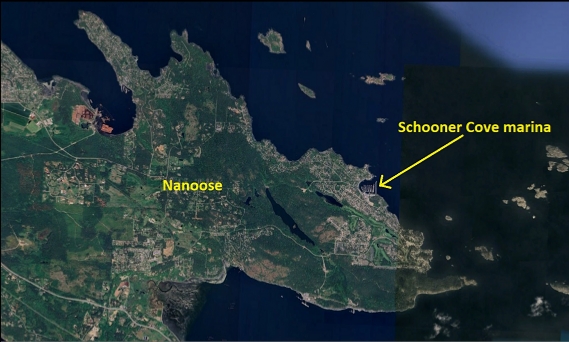

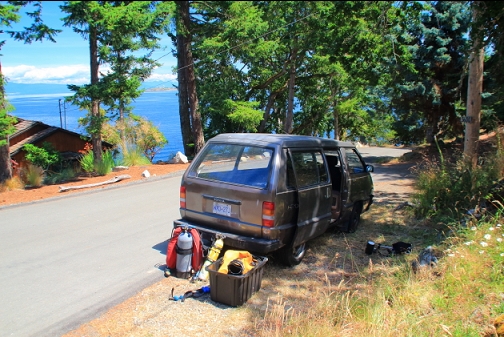
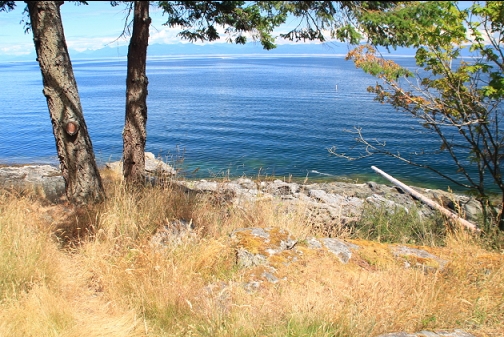
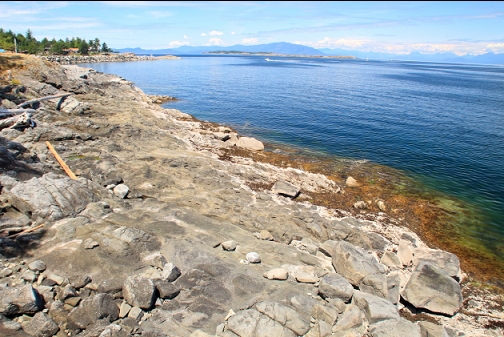
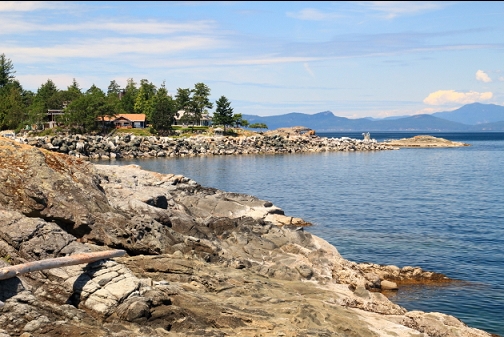

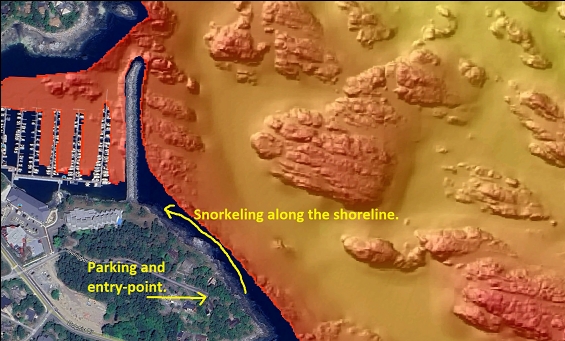
It was a bit tricky entering the water over the slippery, seaweed-covered rocks since it was a semi-low tide. I snorkeled towards the breakwater about 200 meters away. Visibility in the shallows was a decent 10-15'. There were lots of schools of tiny perch swimming around near the surface.
I saw the pipe in the distance so I descended and followed it down. It wasn't covered with boulders and it was smaller than I expected, maybe only 6-8" in diameter. The shallow part was covered with small plumose anemones and tunicate colonies.
In the top 30-40', the pipe ran out over some flat rocky reefs with some boulders and smaller rocks.
Below that, the pipe ran out over a sandy bottom. In this area, there were lots of swimming scallops and those kind of nudibranchs that you see over sand/gravel bottoms in the Nanoose area. Starting around 65-70' deep, I saw several white sea pens. I think that's the shallowest I've ever seen them. Visibility out here was much better, maybe 40-50'.
At 80' deep, the pipe was covered with plumose anemones.
I could see the plumose-covered pipe rising up in the distance. At first I thought that the pipe was floating up off the bottom, since they couldn't possibly have laid the pipe up over one of the large reefs offshore. When I got closer I could see that the pipe actually was running up a wall on one of the reefs. This wall was 80' deep at the bottom and 50' deep at the top. The wall had a boot sponge (with a decorated warbonnet inside and some clusters of feather stars). There were also a few copper and juvenile yelloweye and quillback rockfish. This area is within a Rockfish Conservation Area so trying to kill off the fish is illegal.
I went up to the flat top of the reef. This was about 50' deep. The pipe ran across it, but I didn't follow it very far.
I couldn't spend as much time out here as I would have liked since according to the sidescan image, this wall was over 200 meters from shore and I still had to swim back. I took one last look at the plumose-covered pipe running up the wall and then I started following the pipe back to shore.
While I think that the pipeline itself doesn't make for that great of a dive here, what it leads to (where it stretches up the wall and is covered with plumose anemones) is worth visiting again. The problem is the distance from shore. It's a 200 meter snorkel then a 200+ meter swim out to the wall so almost a kilometer round trip. The depths aren't as deep as many of the popular dives in the Nanoose area, but they're deep enough (80') to limit a diver's time out here as well.










